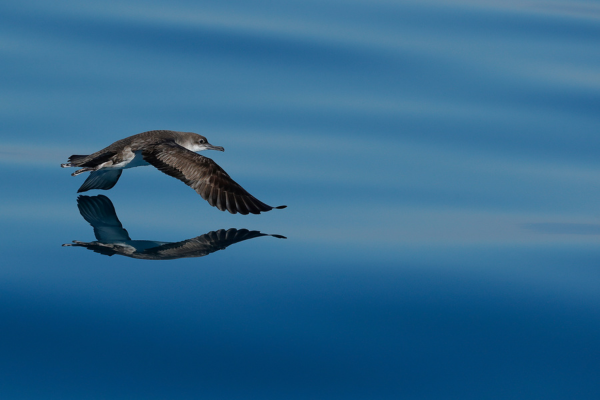 A Yelkouan Shearwater; photo by Milko Marchetti (canva.com)
A Yelkouan Shearwater; photo by Milko Marchetti (canva.com)
A study on colony attendance in Vulnerable Yelkouan Shearwaters Puffinus yelkouan exposed to light pollution from ships by Martin Austad (Behavioural Ecology & Ecophysiology Group, Department of Animal Ecology & Systematics, Justus-Liebig University Giessen, Germany) and colleagues has been published open access in the Journal of Ornithology.
The paper’s abstract follows:
“The ecological effects from artificial light are complex and can affect species and life-stages differently. Ships are a dynamic source of light pollution, often brightly lit and temporarily increasing light levels in otherwise relatively dark areas. Because several nocturnal seabird species display reduced activity and avoidance of natural or artificial light, we expect that bright vessel lights may affect colony attendance patterns. Here, we test whether the presence of ships in front of coastal cliffs affects colony attendance in the Yelkouan Shearwater (Puffinus yelkouan). Ship presence at the site was obtained from an automatic identification system database, and a data logger measured light levels at the colony autonomously for four breeding seasons (2017–2020). Moreover, a Radio Frequency Identification (RFID) system was deployed at a cavernous colony entrance to register arrivals and departures of shearwaters. Direct illumination from ships increased cliff face brightness, and colony attendance was significantly reduced in brighter conditions. Ship presence reduced the number of shearwaters entering the colony per hour by a mean of 18% (SD ± 24). Disruption of natural attendance patterns is likely to have short- and long-term effects on breeding success, physiological condition, and colony viability. Therefore, we propose mitigation measures to reduce the impact from commercial shipping on burrow-nesting seabirds. Local regulations are necessary for colony-specific impact reduction, while incorporation of measures such as black-out blinds, fixture shielding and maximum brightness limits into international conventions can have additional far-reaching benefits.”
Reference:
Austad, M., Oppel, S., Crymble, J. et al. 2023. The effects of temporally distinct light pollution from ships on nocturnal colony attendance in a threatened seabird. Journal of Ornithology. 164, 527–536. https://doi.org/10.1007/s10336-023-02045-z
31 July 2023

 Español
Español  English
English  Français
Français